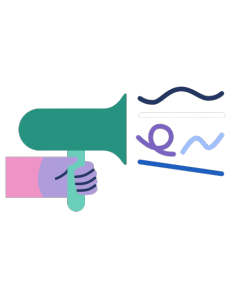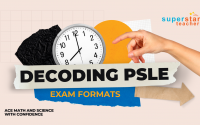Changes to the PSLE Scoring System
Do you, at times, feel that Singapore’s education system is taking a toll on you and your child?
The PSLE is undoubtedly one of the first major hurdles that local children will have to face and overcome. We know that scores are necessary to benchmark the learning efforts a student has made during his or her six years in school. Parents who give their all and take years off from work to provide the necessary support for their children to excel (achieving a high PSLE score) is a common phenomenon.
However, what is the true purpose of education when a student has to be equipped with strategies to “tackle” PSLE questions and chase after that one or two marks?
 It was definitely good news learning in recent years that MOE has plans to make revisions to the current PSLE system (introduction of subject-based banding) as part of a concerted effort to reduce the over-emphasis on scores. Concrete details about the changes were announced on 25 July 2019.
It was definitely good news learning in recent years that MOE has plans to make revisions to the current PSLE system (introduction of subject-based banding) as part of a concerted effort to reduce the over-emphasis on scores. Concrete details about the changes were announced on 25 July 2019.
Here is the complete breakdown of the changes that will be rolled out and implemented starting from 2021:
Note: If your child is in Primary 4 this year, they will be the first batch of students under the new PSLE system!
Achievement Levels
Raw scores for the various subjects will be represented by 8 bands instead of being converted to T-scores. These bands are called Achievement Levels (ALs) with their own scores as shown below.
Raw Score Range Achievement Level
90 and above 1
85 to 89 2
80 to 84 3
75 to 79 4
65 to 74 5
45 to 64 6
20 to 44 7
Less than 20 8
Things are slightly different for foundation subjects. Raw scores will be represented by another set of foundation ALs, which will then be converted to the standard ALs (last three bands).
Raw Score Range
(Foundation Subjects)Achievement Level
(Foundation Subjects)Achievement Level
(Standard Subjects)
75 to 100 A 6
30 to 74 B 7
Less than 30 C 8
Calculation of PSLE score
Each subject will have its own AL, with AL of 1 being the best achievable score. You will get the overall PSLE score simply by adding up the ALs of all the four subjects, which will be within the range of 4-32. Under the new system, the best achievable PSLE score is 4, much like the ‘O’ Levels scoring system.
Here’s a worked example-
Timothy obtained the following raw scores for the 4 different subjects.
- Math: 83
- Science: 86
- English: 90
- Chinese: 90
Converting them into ALs, we get the following.
- AL for Math: 3
- AL for Science: 2
- AL for English: 1
- AL for Chinese: 1
Timothy’s PSLE score will be 3 + 2 + 1 + 1 = 7.
Entry into secondary schools
Cut-off points (COPs) for the various secondary schools will be based on the AL scoring system. Streaming into different courses will still exist, based on the overall PSLE score achieved.
| Course Placement | PSLE score |
|---|---|
| Express | 4 - 20 |
| Express or Normal Academic | 21 - 22 |
| Normal Academic | 23 - 24 |
| Normal Academic or Normal Technical | 25 |
| Normal Technical | 26-30 (achieving at least AL 7 in both English and Mathematics) |
It is also good to note that students who have taken up foundation subjects will still be able to enter the Express stream as long as they have fulfilled the placement criterion of achieving a PSLE score between 4 and 20. This may reduce the pressure to take on and keep up with standard subjects for students who need to build up on their foundation first. Being weaker in a certain subject certainly does not imply that one cannot excel in other subjects and in overall.
Under the new system, the order of school choices submitted by the student will become an important factor during the posting exercise (more students obtaining the same scores). In the event that two students with the same score are considered for a spot in a particular school, the student who has listed the school higher up in the option form will be given the spot.
Taking up Higher Mother Tongue
Currently, students who have taken up Higher Mother Tongue (HMT) are given bonus PSLE points ranging from 1 to 3 (based on the grade achieved) for entry into Special Assistance Plan (SAP) schools. With the new system, no bonus points will be given but HMT students are given the advantage of being prioritised for entry into SAP schools compared to non-HMT students.
Students who wish to take up HMT at the secondary school level can do so if they fulfill either of the following requirements-
- Obtaining a PSLE score of 8 and below
- Obtaining a PSLE score between 9 – 14, while getting a Merit/Distinction for HMT or an AL1-2 for mother tongue
Bottom line
Although scoring high marks and learning appear to be intertwined, the process of learning is still the main focus of education. Learning is about being exposed to new knowledge, understanding the underlying concepts and knowing how to apply these concepts in real-life situations. “Learning” how to score well in your examination papers should not be a student’s priority. With scoring bands representing different ranges of marks, there is less of a need for students (and parents) to be obsessed about getting that few extra marks.
The new scoring system will also reduce the need to compete and compare with peers. Currently, T-scores are calculated by taking into account the standard deviation of the whole cohort. This implies that a student has to outdo the rest to get higher scores. Calculation of the new PSLE score is simply the addition of AL scores, making it less contentious and less likely to fester the competitiveness among students.
According to MOE, the main objective of having a new scoring system is to reduce the rising academic stress that students are facing today. As parents, do you think these changes will effectively deal with the issue?



